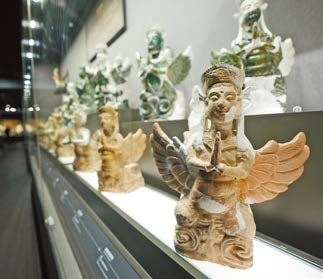

THE Xixia Imperial Tombs, first built nearly 1,000 years ago, have been inscribed on the World Heritage List, highlighting their role in showcasing a multicultural civilization based on agro-pastoralism and trade in Northwest China. The announcement was made last Friday during UNESCO’s 47th session of the World Heritage Committee held in Paris, France, bringing the total number of World Heritage sites in China to 60. Located at the foot of Helan Mountain in Yinchuan, capital of Ningxia Hui Autonomous Region, Xixia Imperial Tombs are a group of imperial burial sites from the Xixia Dynasty (Western Xia, 1038-1227), founded by the Tangut people in northwestern China during the 11th to 13th centuries. Covering an area of nearly 40 square km, the site comprises four types of architectural remains: nine imperial mausoleums, 271 subordinate tombs, a northern architectural complex covering 0.05 square km, and 32 flood control works, revealing the engineering, artistry and cultural achievements of the dynasty. In 1038, the Tangut people from the Qinghai-Tibet Plateau founded the Xixia Dynasty, establishing its capital in what is now Yinchuan. At its peak, its territory spanned 1.15 million square km, dominating the Hexi Corridor and serving as an ancient Silk Road hub. After 10 imperial reigns, the empire was destroyed by Genghis Khan’s Mongol army in 1227. Records indicate that during the Xixia Dynasty, various ethnic groups, including the Tangut, Han, Uygur and Tibetan peoples, coexisted. Their diverse livelihoods, religious practices and cultural customs shaped Xixia’s distinctive and multifaceted cultural identity. The Xixia Imperial Tombs are the largest, highest-ranked, and most intact archaeological site from the Xixia period that has survived to the present day. According to the World Heritage Committee, the site is a testament to the cultural fusion and interactions of diverse traditions. It also bears witness to the unique role of the Xixia Dynasty in cultural and commercial exchanges along the Silk Roads during the 11th to 13th centuries. The Committee commended the efforts and achievements made by the Chinese government in the protection and management of the cultural heritage of the Xixia Imperial Tombs. Rao Quan, vice minister of Culture and Tourism of China, said that China will remain steadfast in fulfilling its obligations under the World Heritage Convention, further enhance holistic and systematic protection of cultural and natural heritage, and improve conservation capacity and standards. (Xinhua) | 
